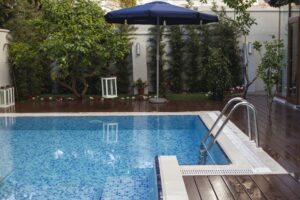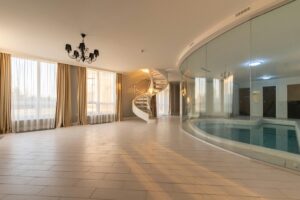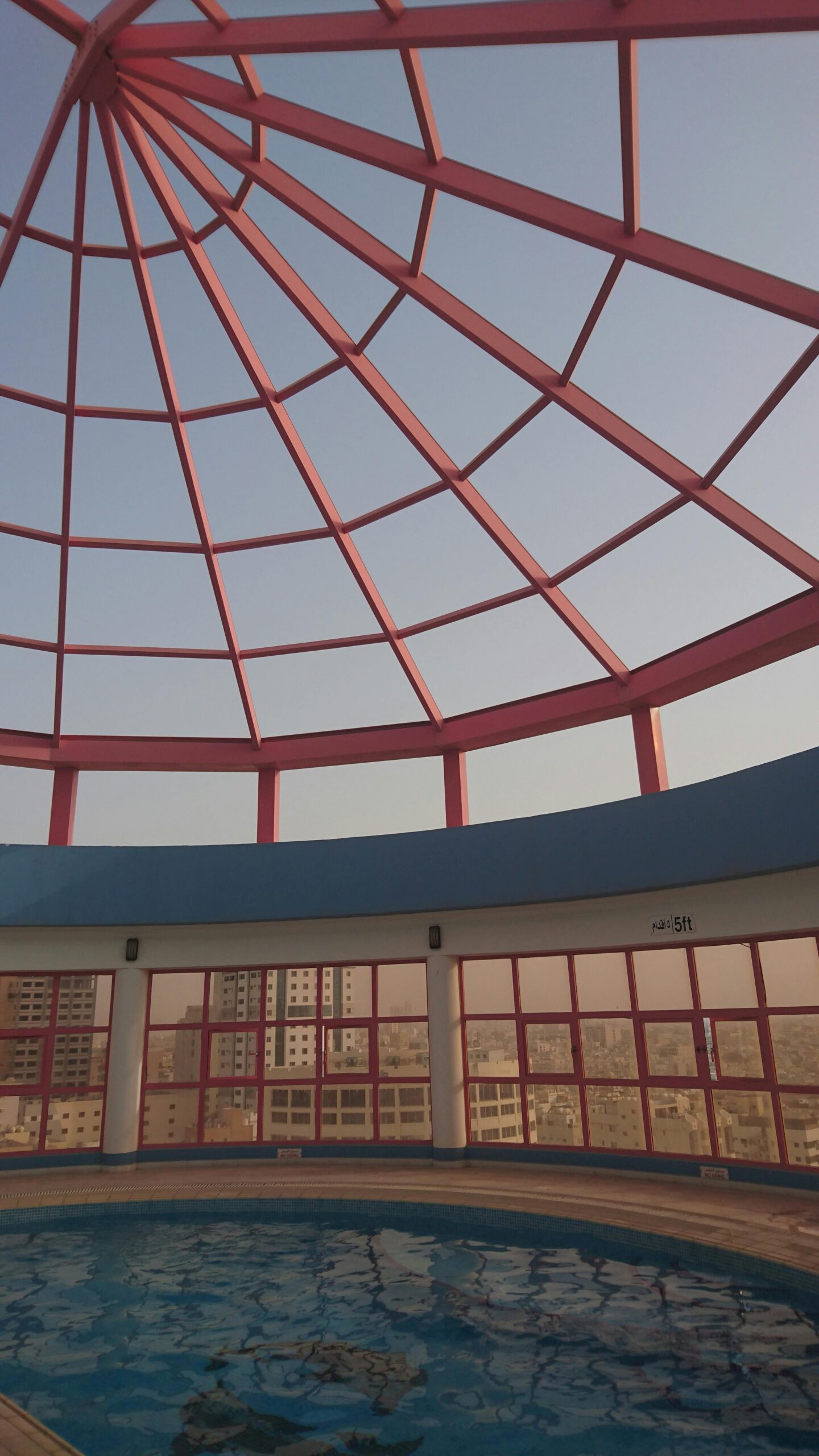Introduction to Indoor Swimming Pool Construction

What Is Indoor Swimming Pool Construction?
Building an indoor swimming pool Construction. Construction of a swimming pool located indoors in an enclosed area, e.g., a basement, extension, or special-purpose building. Compared to outdoor pools that are all year round exposed to weather conditions, indoor pools are not affected by the outside factors and can therefore be used year-round.
Why Build an Indoor Pool Instead of an Outdoor Pool?
Summer outdoor pools are great, but they usually go to waste during those months when the weather is not perfect. Indoor pools resolve this issue and introduce several long-term advantages:
- Cleaner and Easier Maintenance: Less exposure to leaves, dirt, and bugs.
- Added Home Value: Indoor pools tend to give the properties an edge in the market.
- Health and Lifestyle: Swimming is considered to be one of the most effective full-body exercises, and in order to keep fit, a pool in the house makes everything easier.
The convenience and comfort of the home outweigh the increased initial cost to many homeowners.
Basics of Indoor Swimming Pool Construction
Space and Location Considerations
The key to a successful indoor pool project lies in the selection of the appropriate location. Standard options are basements, extensions, or purpose-built pool rooms. When planning, keep in mind:
- Floor and wall strength (water is heavy; one cubic meter weighs a ton).
- Enough ceiling to avoid a space that looks claustrophobic.
- Access for equipment and maintenance—not just during construction but also in the future.
- Natural light opportunities with the help of windows or skylights, as well as minimizing the energy bills, and improving the atmosphere of the pool.

Pool Types (Concrete, Fiberglass, Vinyl)
The type of pool that you select influences cost, durability, and long-term maintenance:
- Concrete Pools: Concrete swimming pools are completely customizable and are very durable; however, installation is more time-intensive and expensive to maintain.
- Fiberglass Pools: Pre-shaped shells, faster to assemble, the least maintenance, but small and limited in shape.
Key Components: Heating, Ventilation, and Lighting
The systems of an indoor pool make it as good as it can be:
- Heating: Gas, electric, or solar heat systems make the water comfortable throughout the year.
- Ventilation: A must-have to control the humidity and your building structure to avoid mold. HVAC systems are frequently used together with dehumidifiers.
Step-by-Step Indoor Swimming Pool Construction Process
Planning and Design Stage
It is here that the vision is formed. Cooperation between architects and pool contractors ensures that they will come up with a design that will fit your space, lifestyle, and budget. Decisions regarding the pool size, depth, shape, and facilities around it (seating or saunas) are made here.
Budgeting and Getting Approvals
Constructions of pools are massive investments; hence, budgeting is essential. Prices depend on the type of pool, the materials, and the functions. Contractors are also involved at this stage in the issuance of permits and local building code requirements to prevent legal problems in the future.
Excavation and Structural Work
Excavation starts when the pool is to be constructed in a basement or a new extension. The foundations can be required to be reinforced to sustain such a weight of water. In the case of above-ground indoor pools, a robust bottom is made.
Plumbing, Electrical, and Ventilation Setup
This is the stage that makes the pool alive. The water circulates over the plumbing system with a set of filters and heaters. Electrical systems power lighting, pumps, and automation. The level of humidity is controlled by installing ventilation systems.
Finishing and Interior Features
Lastly, the pool is lined or tiled, flooring is provided, and safety elements, such as ladders or railings, are installed. The pool is not only a functional one but a pool that is enjoyable through decorative finishes, soundproofing, and energy-efficient systems.
Cost of Indoor Swimming Pool Construction

Average Cost Breakdown by Pool Type
| Pool Type | Estimated Cost Range | Lifespan | Maintenance Level |
| Concrete | $60,000 – $200,000 | 30+ years | High |
| Fiberglass | $40,000 – $100,000 | 20–25 years | Low |
| Vinyl | $30,000 – $70,000 | 10–15 years | Medium |
Factors That Influence the Price
- Size and Depth: Larger pools are intrinsically expensive.
- Material Choice: The most expensive is concrete, the cheapest is vinyl.
- Extra Additions: Heater, lighting, and automatic covers are extra expenses to the budget.
- Complexity of Construction: Construction in a basement and construction in a separate enclosure may have an effect on the cost and labour.
Tips to Reduce Construction Costs
- Keep the design simple rather than complex shapes.
- Invest in power-saving equipment to save in the long term.
- Schedule construction during off-peak seasons for possible contractor discounts.
Real-World Applications of Indoor Swimming Pools
Residential Indoor Pools
To homeowners, an indoor pool is a personal spa of exercise and rest. They can be built to suit the house’s interior design, and this can evolve to include saunas, jacuzzis, or workout rooms.
Commercial Indoor Pools (Hotels, Gyms, Resorts)
The indoor pools of hotels and gyms are regarded as luxury amenities that the hotels and gyms can count on to attract consumers all year round.. Wellness packages are offered as pools are combined with spas in resorts.
Recreational and Therapeutic Uses
Rehabilitation and therapy are also performed in indoor pools. Hydrotherapy can be good in warm-water pools where patients can recover from the injuries they have or relieve chronic pain.
Indoor Swimming Pool Maintenance and Safety
Cleaning and Water Treatment
The water chemistry must be kept clean, and the filters must be cleaned so as to make the swimmers safe.
Humidity and Air Quality Control
Ventilation systems and dehumidifiers are essential. It is harmful to build up moisture and wear down walls, ceilings, and electrical systems without them. Due to proper circulation of air, the environment is also comfortable.
Safety Measures and Child-Proofing
Secure ladders, safety covers in pools, and non-slip flooring are better appreciated to enhance safety. Alarms or lockable doors should also be used by families with children in order to avoid accidents.

FAQs
Q1: How long does it take to build an indoor pool?
Usually 396 months, based on size and complexity.
Q2: What’s the most affordable type of indoor pool?
Vinyl pools are the least expensive to install, but they need a higher number of replacements of tiner. replacements
Q3: Do I really need a ventilation system?
Yes. Mold, corrosion, and health problems may result due to humidity in the absence of ventilation.
Q4: Can I build an indoor pool in my basement?
No, then the space should be sufficient, and the construction must be able to support the burden.
Conclusion: Is Indoor Swimming Pool Construction Worth It?
The process of building an indoor swimming pool is a significant investment, yet to most homeowners and businesses, the rewards far outweigh the expenses. Long-term benefits of an indoor pool are the ability to swim the wholeyear-roundd, more privacy, addition of value to the property, and health benefits.
The key to this is proper planning- that is, to be able to pick the proper location, materials, and systems to make the pool safe, durable, and efficient. The right design and professional support can transform an indoor pool into a personal retreat or a valuable business asset.

